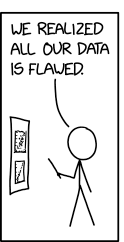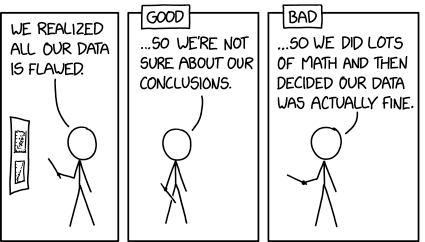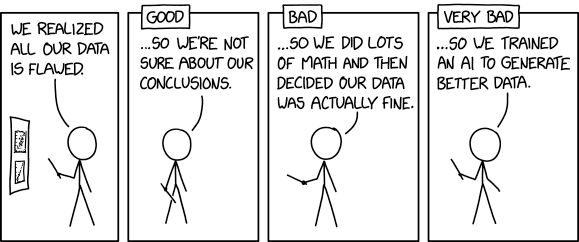Working with Digital Data
in Religious Studies
14. Conclusion: Present Your Dataset
Summer Semester 2024
Prof. Dr. Nathan Gibson
Outline
- Review: AI Pipeline
- 5 Presentations –Break–
- Course Overview
- Final Presentation & Conclusions
Announcements
Scheine (Leistungsnachweis/Teilnahmenachweis) can be dropped off with Eva Kramberger (IG 1.551, Kramberger [at] em…)
📈 Review: AI Pipeline

📈 Review: AI Pipeline

📈 Review: AI Pipeline

📈 Review: AI Pipeline

📈 Review: AI Pipeline
🧭 Objective: Plan the process of integrating machine-learning tools into your data preparation.
📈 Review: AI Pipeline
📈 Review: AI Pipeline
(see whiteboard)
Presentations
5 minutes:
- Data format & source
- Editing, processing, filtering, adding
- Question you could answer
- Most valuable learning
Break
Course Overview: Goal
By the end of the course, students should be able to create and curate datasets relevant to religious studies in formats that can be used for further analysis while reflecting critically on this process.
Course Overview: Goal
 |
 |
 |
 |
| Pick | Prepare | Process | Package |
| Collecting sources | Structuring data | Outputs | Presentation |
| Manuscripts, Photos, Interviews | Transcribing, Collating | Textual comparison, criticism, content analysis, coding | Edition, Narrative, Thematic discussion, Interactive website |
Course Overview: Knowledge
You’ve learned what the following are:
- text, image, audio, and video formats
- git versioning system
- databases
- Python
- URLs, domains, queries, and APIs
- metadata
- FAIR principles for data
- AI/machine learning, large language models (LLMs), ground truth, neural networks
Course Overview: Skills
You’ve learned how to …
- do complex find/replace operations with regular expressions (RegEx)
- preserve your data
- track changes with git
- use spreadsheet formulas
- structure your data into entities, attributes, and relationships
Course Overview: Skills
You’ve learned how to …
- clean, filter, and match your data
- download/scrape websites using API queries, wget, and Python
- add metadata to your data
- use machine learning for specific data tasks
- transcribe text from audio/video
Course Overview: Reflection
You’ve thought critically about …
- the “computational turn” as one of the “turns” in humanities research
- the difference between data and the way it is formatted or presented
- which data might become inaccessible
- systematic errors in data that might distort analysis
Course Overview: Reflection
You’ve thought critically about …
- guidelines for consistent data entry
- open standards for data formats
- legal and ethical aspects of downloading and publishing data
- whether and how your data should be open
- how input data affects the results of machine learning
- what aspects of multimedia data might be relevant for analysis
Course Overview: Relevance
What does all this have to do with studying religion?
